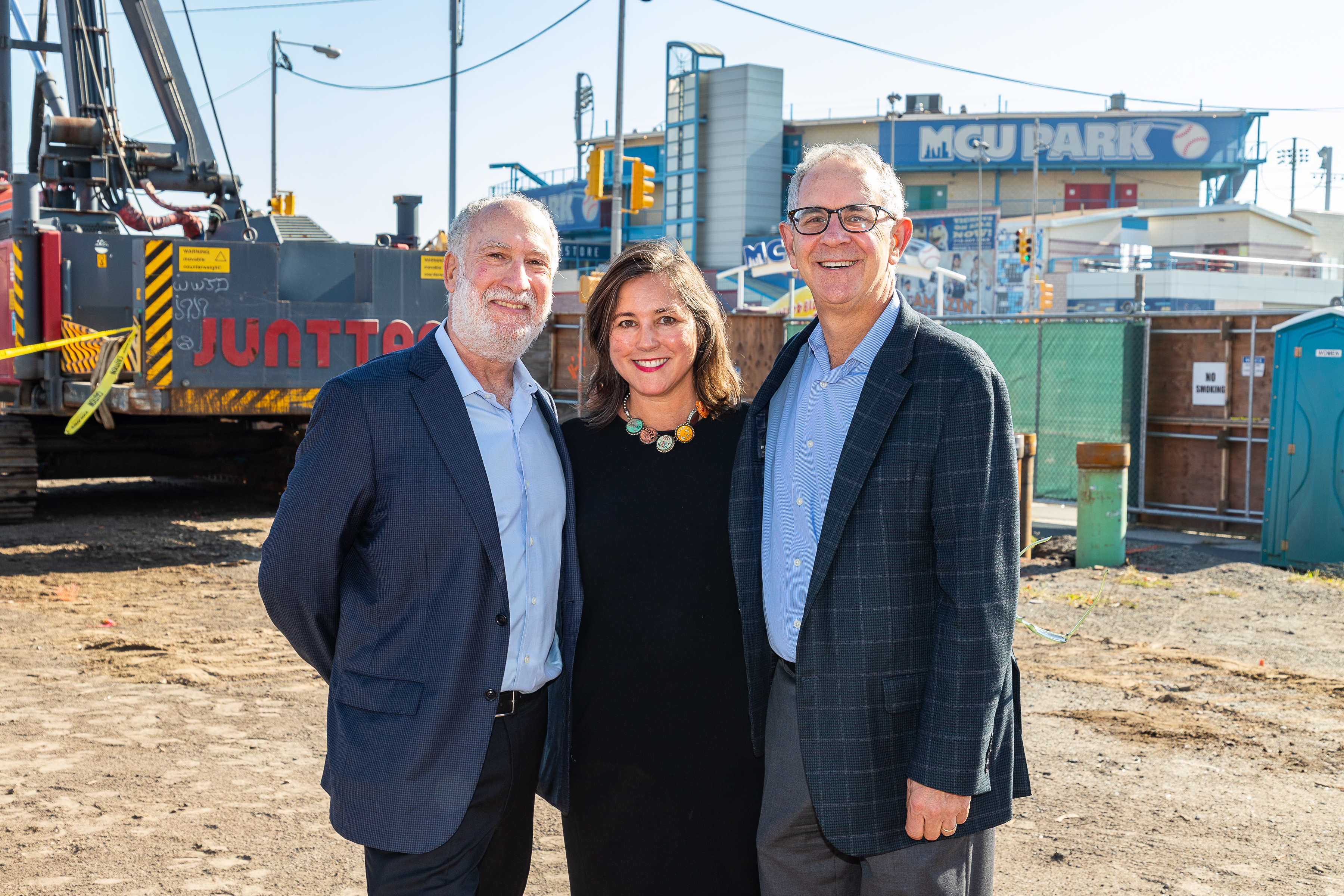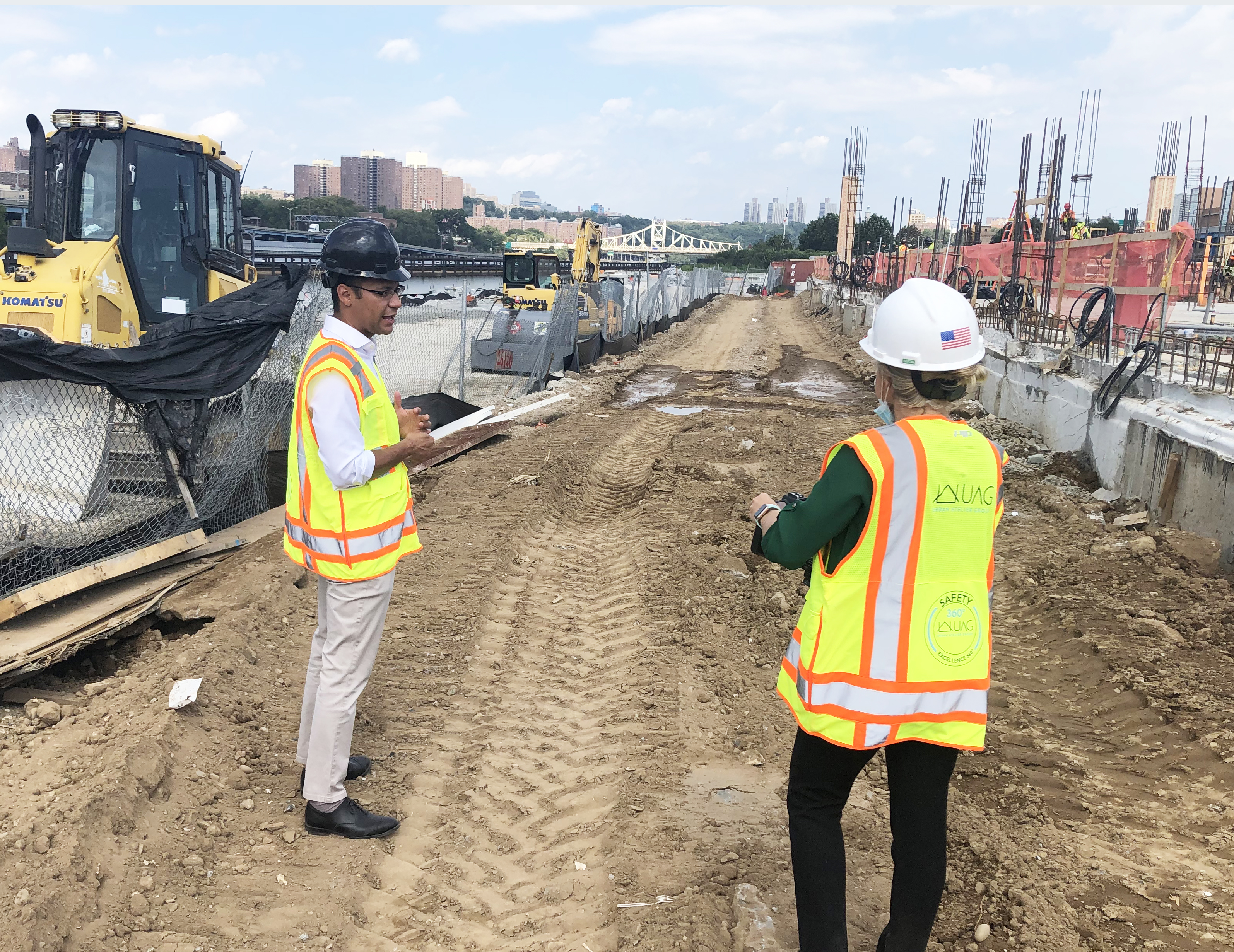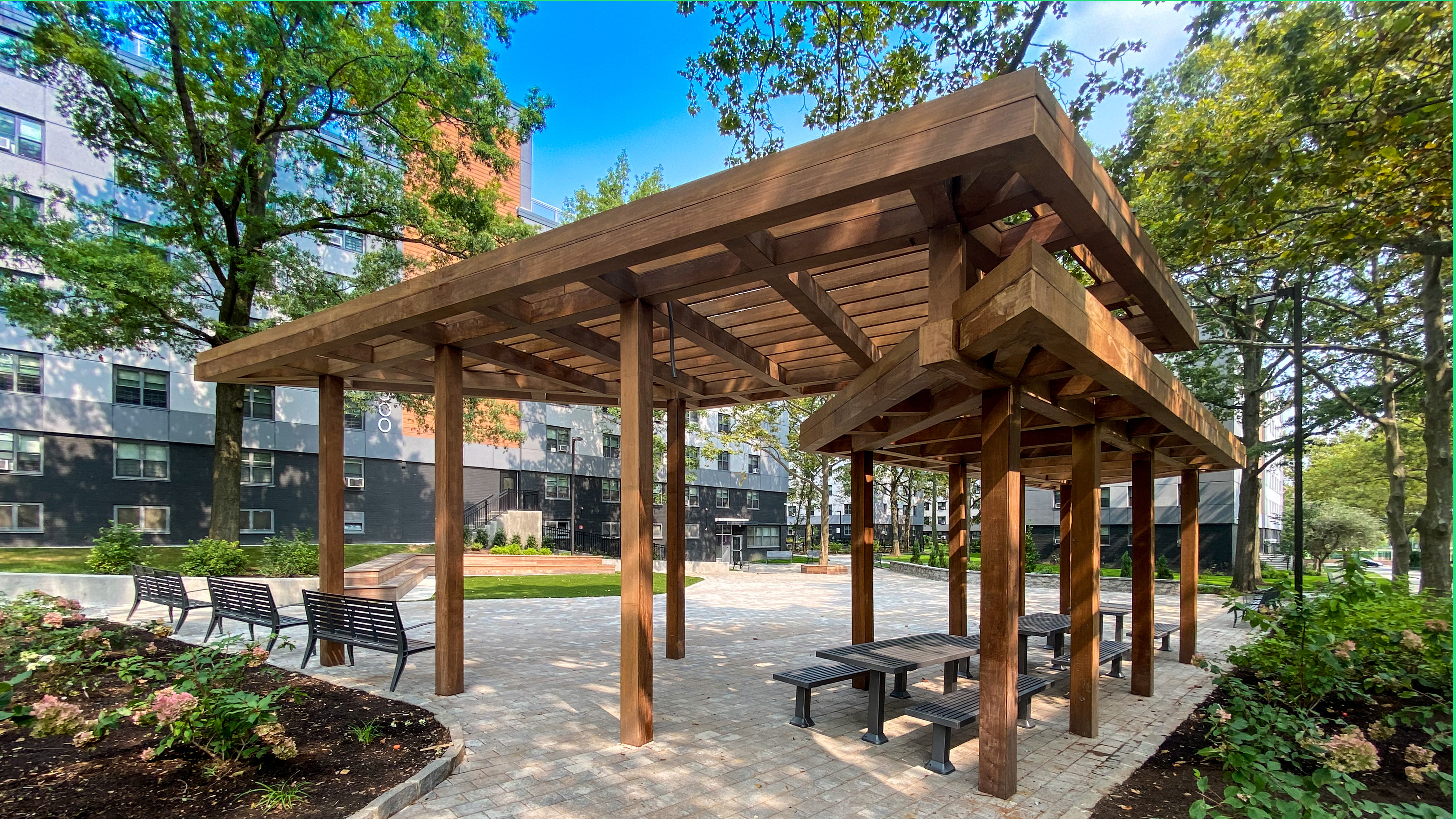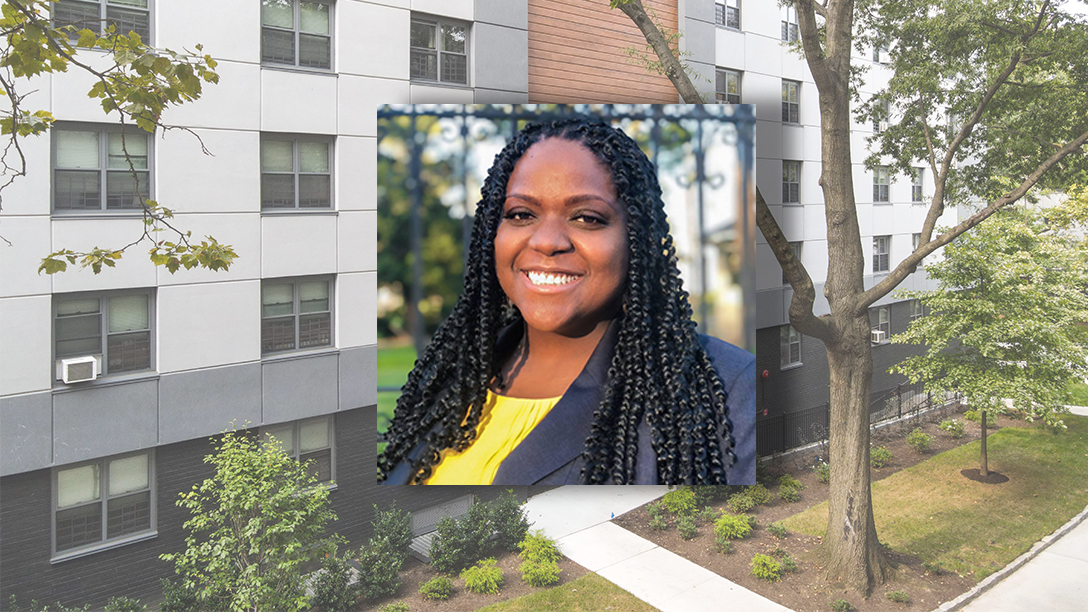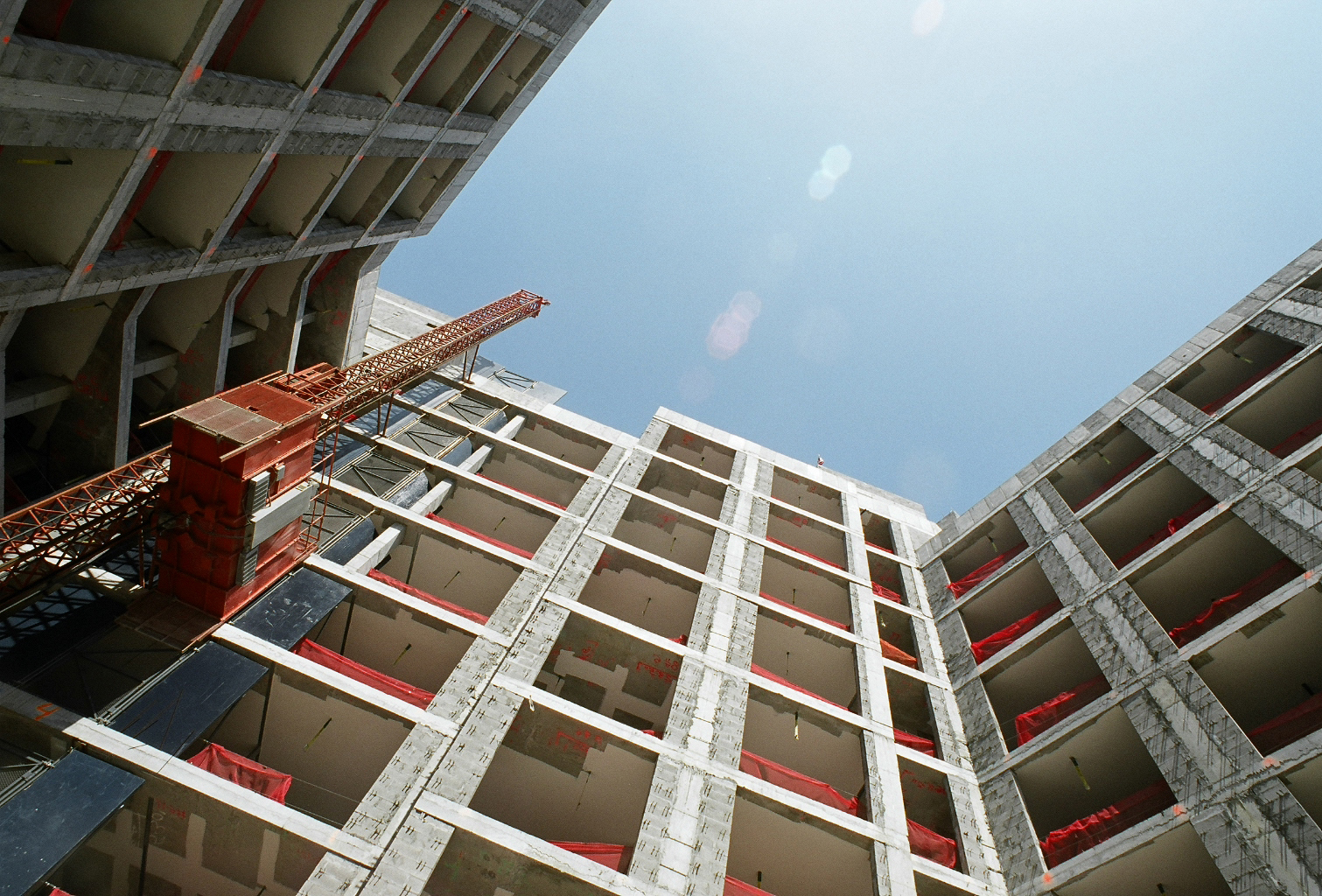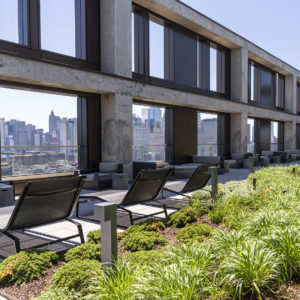
The roof deck at The Essex
The architecture critic of The New York Times Michael Kimmelman published an extensive review of Essex Crossing this week. The article is a stunning reminder that the Essex Crossing we envisioned is coming to fruition.
It seems like Essex Crossing has reached milestone after milestone over the past few months. Four of the nine buildings have been completed and three are topped out, the most recent of which is 202 Broome Street. The Essex Market, which I’ve mentioned previously here, opened at the beginning of the summer, and more recently we saw the Essex Crossing Farm open. The farm, the largest of its kind in Manhattan, is selling its fresh produce twice a week from its stand located in Essex Crossing Park. The Park also opened last month and was formally dedicated to the families that were displaced from the Seward Park Urban Renewal Area between 1965-1973. The dedication also honored the local community’s continuing efforts to help residents return home.
While this neighborhood transformation seems to be accelerating at a breathtaking pace, it has really taken many years for this project to be fully realized. The Seward Park Urban Renewal Area sat mostly vacant for 50 years after inactivity and broken promises to the community. Since Essex Crossing first broke ground in 2015, this mixed-income, mixed-use development has completely transformed the neighborhood, delivered more than 500 units of affordable housing, and created much needed commercial, community and green space.
Core to the success of Essex Crossing is the partnership with the community. While the City was drafting the RFP in 2012, the Community Board 3 Task Force was instrumental in identifying and prioritizing community preferences for the development, including housing affordability, creating community-minded retail, family-entertainment amenities, a home for the historic Essex Street Market as well as green, community facility and educational spaces.
Since then, the project team has met with CB3 quarterly to provide updates on the progress of delivering community benefits. Most recently of note is the lease and build out of 40,000 square feet of community facility space at the Frances Goldin Apartments, a 99-unit affordable building for seniors at the corner of Delancey and Clinton streets. Neighborhood non-profits, including the Chinese American Planning Council, Grand Street Settlement, Henry Street Settlement and the Lower East Side Partnership, will use the space to serve community members of all ages with programming focused on early childhood education, teen engagement, adult workforce, and senior services. This community space is in addition to the existing 55,000 square foot NYU Langone medical facility, which is also located within the Francis Goldin building.
As Essex Crossing has progressed, DSA has sponsored the City Seekers after-school enrichment program for 3rd, 4th and 5th graders where they explore the theme of ‘healthy community building’. The program directly engages students from local elementary schools and helps them navigate the Lower East Side neighborhood, its history, and its ongoing evolution.
Today, the Essex Market is humming with shoppers and the community-focused aspects of the project are flourishing, including Grand Street Settlement’s Grand Lo Café and, of course, the Essex Crossing Farm. New commercial uses are also creating retail and entertainment options for residents and visitors alike, including the largest Trader Joe’s on the East Coast, a Target, and a 14-screen Regal theater.
What’s next for Essex Crossing? The Market Line is set to open this year, and once complete will be one of the largest markets in the world with more than 100 local-retail vendors and spanning more than three city blocks. The International Center of Photography will also call Essex Crossing home when it opens in early 2020. The Gutter bowling alley is also expected to open in early 2020 rounding out the cultural and entertainment amenities within the project.
If you haven’t visited Essex Crossing already, I highly recommend you stop by and see what a true partnership between public and private interests can deliver: a thoughtful development that integrates into the neighborhood and reflects the history of the Lower East Side.

